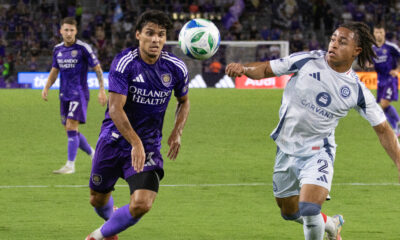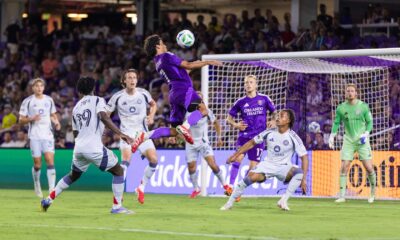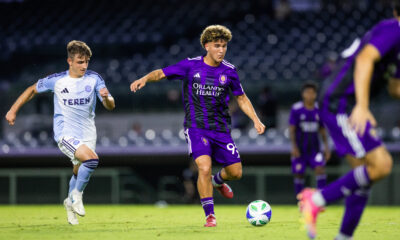Orlando City
Orlando City Needs to Defend Better to Make a Deep Playoff Run
An analysis of how Orlando City’s defensive performance has been based based opponent rankings.
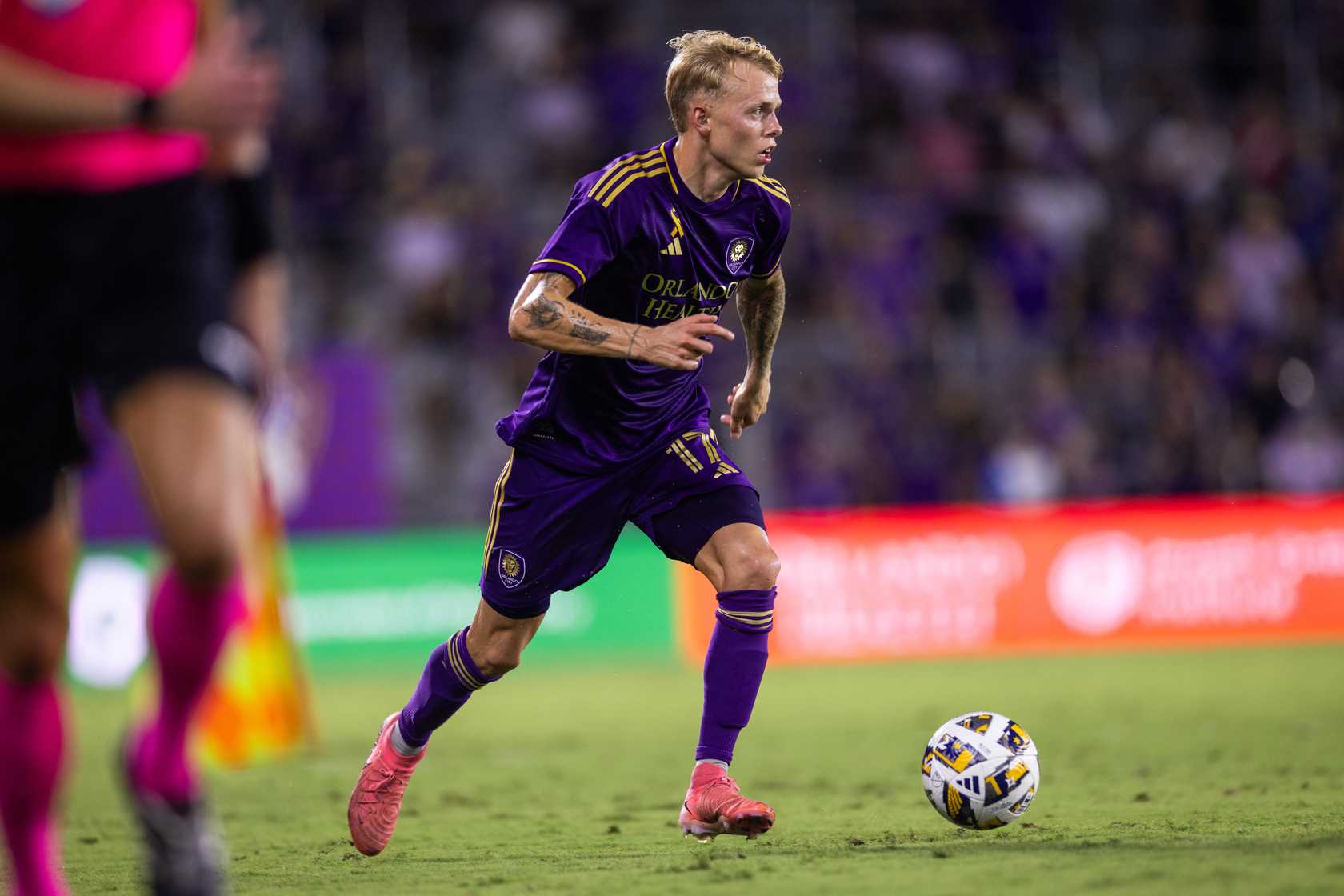
Orlando City scored three goals Saturday night against Columbus, marking the seventh time in the last 12 games that the Lions had scored at least three goals in an MLS match. Unfortunately, the team gave up four goals in the loss, leading me to want to spend some time this week looking at the defense again to see if this game was just an aberration, playing against one of the best teams in MLS in their home stadium, or if as the team goes into its final stretch of four games against one elite team (FC Cincinnati) and three teams fighting for their playoff lives (FC Dallas, Philadelphia Union, Atlanta United) there is something still to be ironed out before Lions start their playoff run, assuming they make it.
Let’s start with just some basic numbers, and right away we will see that the performance recently has actually been an improvement from the beginning part of the season, even with four goals against in the most recent match:

This is where it might be fair to bring out the famous saying of “don’t make a mountain out of a molehill,” and point to the fact that the Lions earned shutouts in each of the three games prior to the Columbus match. I will point out that those teams the Lions shut out are ranked 23rd, 27th, and 15th overall in the MLS standings as a counter, but I do concede that one game is the smallest of small samples. So, let’s expand that one-game sample and look at how Orlando City has done against its opponents based on how they rank in MLS in terms of the full league standings (the first two rows are subsets of the third row):

This is not surprising. The teams ranked higher in the full league standings are ranked higher for a reason — specifically that they frequently score more goals than their opponents. It is not a surprise then that Orlando City gives up more goals against those good teams than against teams ranked lower in the standings and also has most of its shutouts against weaker teams as well. However, in the context of whether there is still something to be ironed out, yes, there is something, because once the playoffs start, every team will be good and Orlando City is giving up an average of two goals per game against the top half of MLS.
There is a story behind every goal that a team gives up, so while we have statistics that we can look at around the defense and the goalkeeping, it is never as clear and clean as data from baseball or cricket, for example, when every pitch/bowled ball can be looked at in isolation. That said, Orlando City has given up zero own goals this season, meaning every ball into the Lions’ net came on a shot, and fbref.com has a ton of information about all of those shots that we can look at (note: MLS Avg = the average for every other team except Orlando City; red means a number is worse than league average and green means better than league average):

I had three major takeaways from this data:
- Either Orlando City’s defense has choked off opposition shots this season against good teams or the better teams are just more judicious with the shots they take, but there is a stark difference in shots allowed per 90 minutes for the games against higher performing teams vs. lower performing teams.
- Teams towards the top of the standings take fewer shots when they play Orlando City but put a significantly higher percentage of their shots on target when they do get their shots off. Orlando City’s opponents in the Top 10 row above were Inter Miami (twice), Columbus (twice), LAFC, and FC Cincinnati. While those teams each are better than league average in shots on target overall (45.3%, 35.6%, 37.4%, and 37.5% respectively), when they played Orlando City, they looked like Olympic archers, putting everything on target with a 44.4% average.
- The scariest numbers for me are the percentages of shots on target that turn into goals against good teams. Good teams clearly must have goal scorers, but more than half of the shots that go on target go in? Orlando City has some pretty talented offensive players, and they score a goal on 34% of the shots they put on target. The teams in the Top 5 row above are nearly twice as efficient as that when they play Orlando City, and that is not great, Bob. Or not great, anyone.
Going back to what I wrote earlier, it is exceedingly difficult to place the blame for any goal fairly on a per-player or per-positional-grouping basis. It’s like the butterfly effect. Every action prior has a link in the chain. Perhaps in some future article I’ll use Markov Chains to analyze the chains that lead up to goals to determine their likelihood, and I know all readers will be as enthralled as my high school students were when I taught Markov Chains in Precalculus. They were. I swear.
I think a common reaction for a lot of people when they see those percentages in red above is to think wow, Pedro Gallese must be having a rough season, since such a high percentage of shots on goal become goals. I do think that Gallese is not having an elite season, but it is completely fair to point out that he has had little to no chance on a large percentage of the goals he has given up. As our Mane Land PawedCast hosts Michael Citro and Dave Rohe often say, “¿Por que no los dos?”, as it very much can be on Pedro and on the defense for allowing point-blank shots.
Looking at the four goals from Saturday, as I did in the Five Takeaways and Sean Rollins did in the Player Grades, it is hard to blame Gallese for any of the four goals Columbus scored. Two of the goals were from absolute point-blank range with no defenders between the scorer and the goal, one took a deflection, and the other was smoked into the lower corner.
PSxG, not to be confused with PSG, which used to be everyone’s other favorite team when Messi, Neymar, and Kylian Mbappé were there, stands for post-shot e(X)pected goals and is a measure that includes the location of the shot as well as how well the ball was struck to create a percentage chance that a shot will become a goal. I like this stat, because it includes an independent evaluation of how well the player shot the ball, which makes me more confident in this metric as opposed to plain expected goals (xG), which just uses the location of the shot, no matter how well the ball was hit.
The four goals against Columbus were, in order of when they happened in the game: 0.70, 0.98, 0.61, and 0.78 for their PSxG value. You’ll remember from math class that 0.70 is the same as 70%, and so all four goals from Columbus were on shots where Gallese was at best 39% likely to have made the save on the shot. That is not to say that El Pulpo could not have made the save, as he has made saves on even more difficult shots the past, but unlike in The Hunger Games, the odds were forever not in his favor on those four shots on Saturday.
Gallese has not had a great year in terms of making those elite saves, or really saves in general. During the last three seasons (2022, 2023, and 2024 YTD) there have been 119 goalkeeper seasons of at at least 500 minutes (i.e. Gallese’s 2022, 2023, and 2024 seasons are three of the 119). His 2024 season save percentage of 64.5% ranks 96th of 119 seasons and 29th in MLS this season, and his 2024 (stay with me here) PSxG-GA90 (fancy acronym for post-shot eXpected goals minus goals allowed per 90 minutes — the more positive the number, the better the goalkeeper is doing at saving shots that were expected to be goals) is -0.08, which ranks 79th of 119 seasons and 30th in MLS this season and indicates that Gallese is actually not saving as many shots as “expected” by the analysts from Opta who track the shots.
Those stats do not flatter Gallese, but how many of those shots could he really have saved or should he have saved? There is not yet a clear stat for that yet. PSxG is probably the closest to that, but it is still pretty subjective as it is a human who evaluates how well a shot was struck and the likelihood of it going into the net. Save percentage is not subjective, but no analyst would use that measure as a definitive characterization of a goalkeeper’s worth. The eye test is by definition subjective, and goalkeepers also do a lot more than just saving shots anyway. I still believe Orlando City has a strong goalkeeper, and even if he is not performing near the top of the MLS statistical charts, I do not think by any means that Gallese is the primary reason for the struggles against the better teams.
I believe the unsatisfactory answer for whether something needs to be ironed out is “yes, but something is actually a lot of things.” Orlando City’s best win all season, in terms of beating a team ranked high in the MLS standings, is the recent win against Charlotte FC, which is 15th best in MLS. In their seven matches against teams rated 14th or better, the Lions have taken two points from a possible 21, and have been outscored 20-7. When they play good teams, the defense needs to tighten up, and the offense needs to score more than one goal per game, or else all of a sudden it is going to be the off-season. The next test against a top team will be at FC Cincinnati on Oct. 5 and then in the playoffs, though the Lions still need to earn some points to ensure that they qualify.
Providing the Lions qualify, Orlando City will have to defeat top teams to advance and compete for MLS Cup. As with any playoff system, all that really matters is that you qualify, and then how you did in the regular season does not matter, and the best team on the day advances. Orlando City has not shown thus far this season that it can beat an elite team, but it has shown that it can play well for stretches. The Lions tied the best team in the league and kept it close against the teams ranked second and third.
The old saying is that defense wins championships. Let’s hope the Lions can make some adjustments and defend against the top teams the way they have against everyone else.
Orlando City
Orlando City vs. Chicago Fire: Player Grades and Man of the Match
How did your favorite Lions perform in Orlando City’s 3-1 loss against the Chicago Fire?
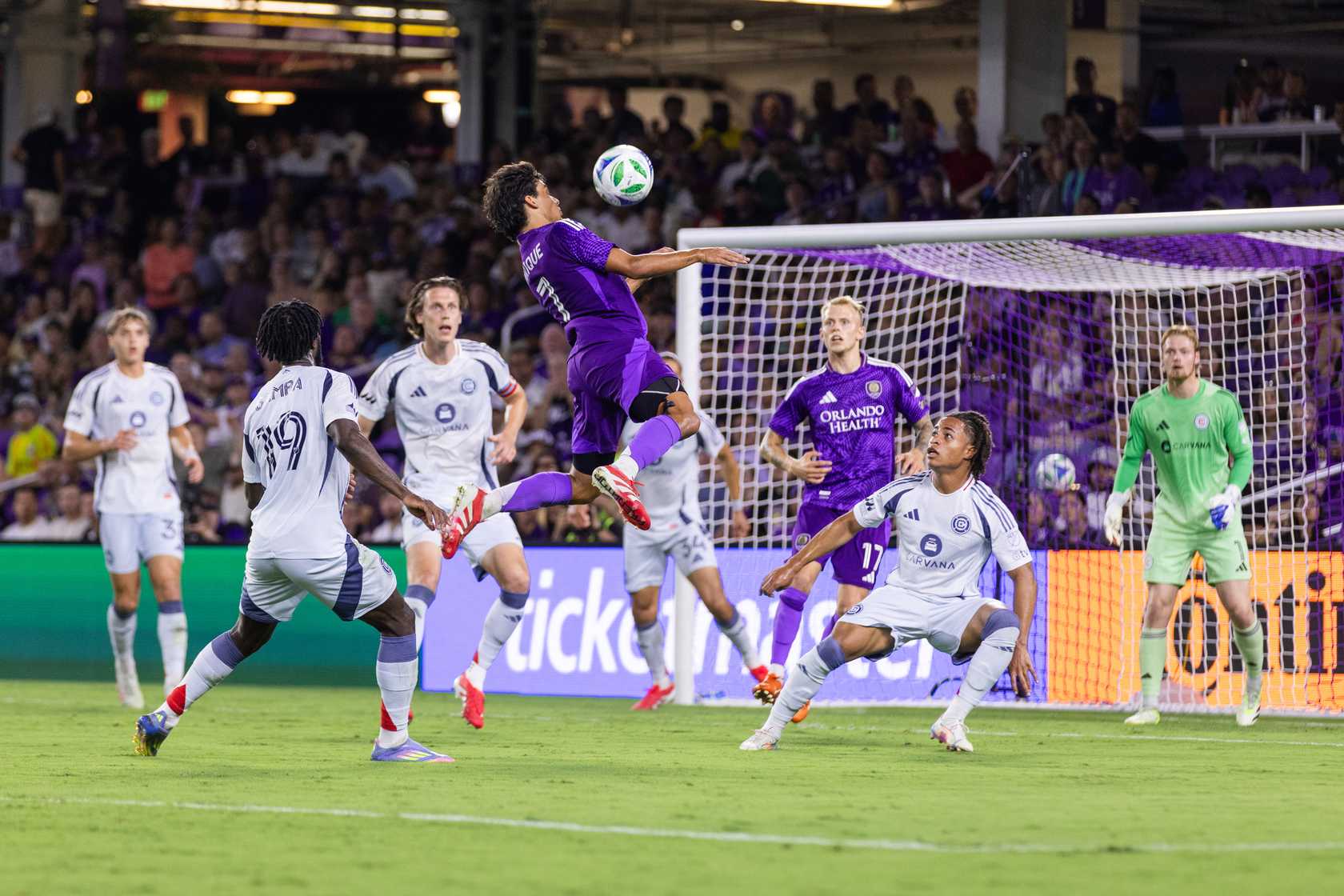
Orlando City turned one loss into two heading into the international break. The Lions gave up three first-half goals and lost 3-1 at home to the Chicago Fire. A determined but ineffective offense wasn’t able to make up for lapses on the defensive end. The break is about a week late, but perhaps the players can get some rest. Let’s take a look at how Orlando City’s players rated individually in their Eastern Conference matchup.
Starters
GK, Pedro Gallese, 5 — El Pulpo literally had the ball slip through his hands on Philip Zinckernagel’s early goal. The other two goals weren’t on him, but it’s hard to forgive the first howler. He recorded one save and one clearance. It was not a great night from Gallese, but every keeper has one like that occasionally. He had 22 touches, completing 89.5% of his 19 passes and five of his seven long balls.
D, David Brekalo, 6 —Brekalo started at left back as usual, but after Rodrigo Schlegel subbed off he moved inside with Robin Jansson. He was busy in both halves of the pitch as he pressed into the attack when at fullback. He didn’t push forward quite as much after moving to center back, though he did still contribute as Orlando chased the match. He recorded 71 touches, completing 86.2% of his 58 passes. Brekalo also completed four of his five long balls. Like many, he managed one shot, though it wasn’t on target as his effort off a corner kick was blocked. Defensively, he tallied three interceptions and one tackle.
D, Robin Jansson, 5.5 — The captain let his emotions get the better of him in the first half. He was battling Hugo Cuypers all night, and given Cuypers scored a brace, I can’t say Jansson won the matchup. His frustration resulted in a yellow card in the 45th minute. After the half, he was able to get back on track, though the damage was done. Jansson had 70 touches, completing 100% of his 59 passes. He had one key pass and even took one shot, though it wasn’t on target. Defensively, he recorded three clearances and one tackle.
D, Rodrigo Schlegel, 4.5 — It was not a good night for Schlegel. He lost Cuypers on the second and third Chicago goals, and it’s not recommended to allow the opposition’s best goal scorer to be alone in the box or to get in behind the back line. Defensively, he only contributed two tackles and recorded no interceptions or clearances. He managed 30 touches and completed 88.9% of his 27 passes. Schlegel committed two fouls and received a yellow card in the 49th minute. He was subbed off in the 54th minute for Rafael Santos.
D, Alex Freeman, 6 — Freeman scored Orlando’s only goal in the 39th minute, putting a header off the corner kick on target and into the back of the net by way of a deflection in front. It was his lone shot on target in two attempts. The right back recorded 77 touches, completing 78.4% of his 51 passes, including five crosses and one key pass. Defensively, he recorded three interceptions, one clearance, and one tackle.
MF, Ivan Angulo, 6 — Angulo still doesn’t have a goal in 2025, which isn’t surprising given his one shot on goal was well off target. He wasn’t bad in this match, but he also didn’t play very long, as he only touched the ball 19 times. He got lost defensively on the second Chicago goal as there was poor communication and he strayed inside, leaving Zinckernagel out wide alone for an easy cross to Cuypers. His best moment in the match came after tracking back to help recover the ball in his own end before making an incredible long run deep into the attacking box and backheeling a pass to Luis Muriel, who dropped it to Marco Pasalic for a good scoring chance. Angulo completed all of his 12 passes. He came off at halftime for Ramiro Enrique, but he was one of the few players who appeared to have a lot of jump in his legs in the first half.
MF, Eduard Atuesta, 6.5 (MotM) — Atuesta showed how important he is to Orlando City club in this match. His vision and ability to connect passes put teammates in dangerous places, even if they couldn’t convert those chances. He continued to make good passes in and around the box trying to get Orlando’s offense going. Atuesta had a team-high 94 touches, completing 89.7% of his 78 passes, including two key passes. He connected on five of his seven long balls and one of his seven crosses. Atuesta attempted two shots, though neither was on target. Defensively, he contibuted one tackle.
MF, Joran Gerbet, 6 — Gerbet started in place of the suspended Cesar Araujo and continues to have some rookie struggles midway through the season. If he hadn’t been so good earlier in the season, it wouldn’t seem like he’s having difficulty lately. Like others, he got a little bit better as the match went on, though he came off in the 77th minute for Dagur Dan Thorhallsson. Gerbet had 44 touches, completing 93.8% of his 32 passes, winning one aerial, and recording one key pass. Defensively, he contributed four tackles, and one interception,
MF, Marco Pašalić, 6 — Pasalic was active if ultimately ineffective in Orlando’s attack with four shots, though he only put one on target. He recorded 63 touches, completing 82.2% of his 45 passes, including two of his four long balls. Pasalic contributed two key passes and connected on one of his five crosses. He took a nasty tumble, hitting the back of his head when he landed, though he was able to continue. He exited in the 88th minute for Gustavo Caraballo.
F, Martín Ojeda, 6.5 — It was Ojeda’s corner kick that found the head of Freeman to give Orlando its only goal. He wasn’t able to contribute a goal in this match, though not for a lack of trying. He took four shots with one on target, led the team with eight key passes, and recorded the assist. Ojeda touched the ball 62 times, completing 90.6% of 32 passes. He was fouled three times, one of which earned a free kick outside the box in the 58th minute. He even contributed on defense with two tackles and an interception.
F, Luis Muriel, 6 — On another night Muriel has at least a brace. He took six shots with none on target, though he had a free kick that went into the wall 59th minute, and he hit the crossbar in the 64th. If that ball is two inches lower, Orlando maybe climbs back into the match. He still dribbled into blind alleys and gave the ball away to the opposition, though not as much as in some other matches. He had 65 touches, completing 80% of his 35 passes, including one cross and two key passes.
Substitutes
F, Ramiro Enrique, (45′), 6 — Enrique came on for Angulo to start the second half as the Lions pushed for a comeback. He was fairly accurate, putting two of his four shots on target. One shot in the 62nd minute went right to the keeper, though the other shot was saved it was a very well taken chance on the outside of his right foot as he moved towards the goal. He also made a great tackle in the 86th minute to take the ball back from Jonathan Bamba. He did all of that on only 19 touches, completing 88.9% of his nine passes, including one key pass.
D, Rafael Santos, (54’), 5.5 — With both Schlegel and Jansson on yellow cards, Santos came on to replace Schlegel to allow Brekalo to move inside with Jansson. Perhaps it was because of the desperation with which Orlando City was playing, but it wasn’t too bad of an outing for Santos. He was active on the left side, putting in five crosses, but he completed just one. Santos tried to combine with his teammates while looking to break down the Chicago defense. He had 34 touches, completing 95.8% of his 24 passes. Defensively, he had one clearance.
MF, Dagur Dan Thorhallsson, (77’), 6 — I feel like Dagur Dan could have started in place of Gerbet rather than subbing on. His motor was obviously better than those that had played more minutes during the month of May. He was persistent in trying to win the ball back when Chicago tried to counter attack. He only managed nine touches, completing 100% of his six passes. His individual effort in stoppage time was a highlight, as he did well to win the ball back and jumpstart the counter, but ultimately Enrique not only strayed offside prior to the pass but also fired his shot off target anyway.
MF, Gustavo Caraballo (88′), N/A — The youngster came on late for Pasalic. He only managed six touches, completing 80% of his five passes. The four he completed were all back passes. He made some runs into the box, but the ball never arrived for him to get a chance.
That’s how I saw the individual performances in Orlando City’s disappointing 3-1 loss at home against Chicago. Let us know what you thought of the game in the comments below and don’t forget to vote for your Man of the Match.
Lion Links
Lion Links: 6/2/25
Lions fall to Chicago Fire, Pride players in action during international break, OCB beats Chattanooga FC, and more.
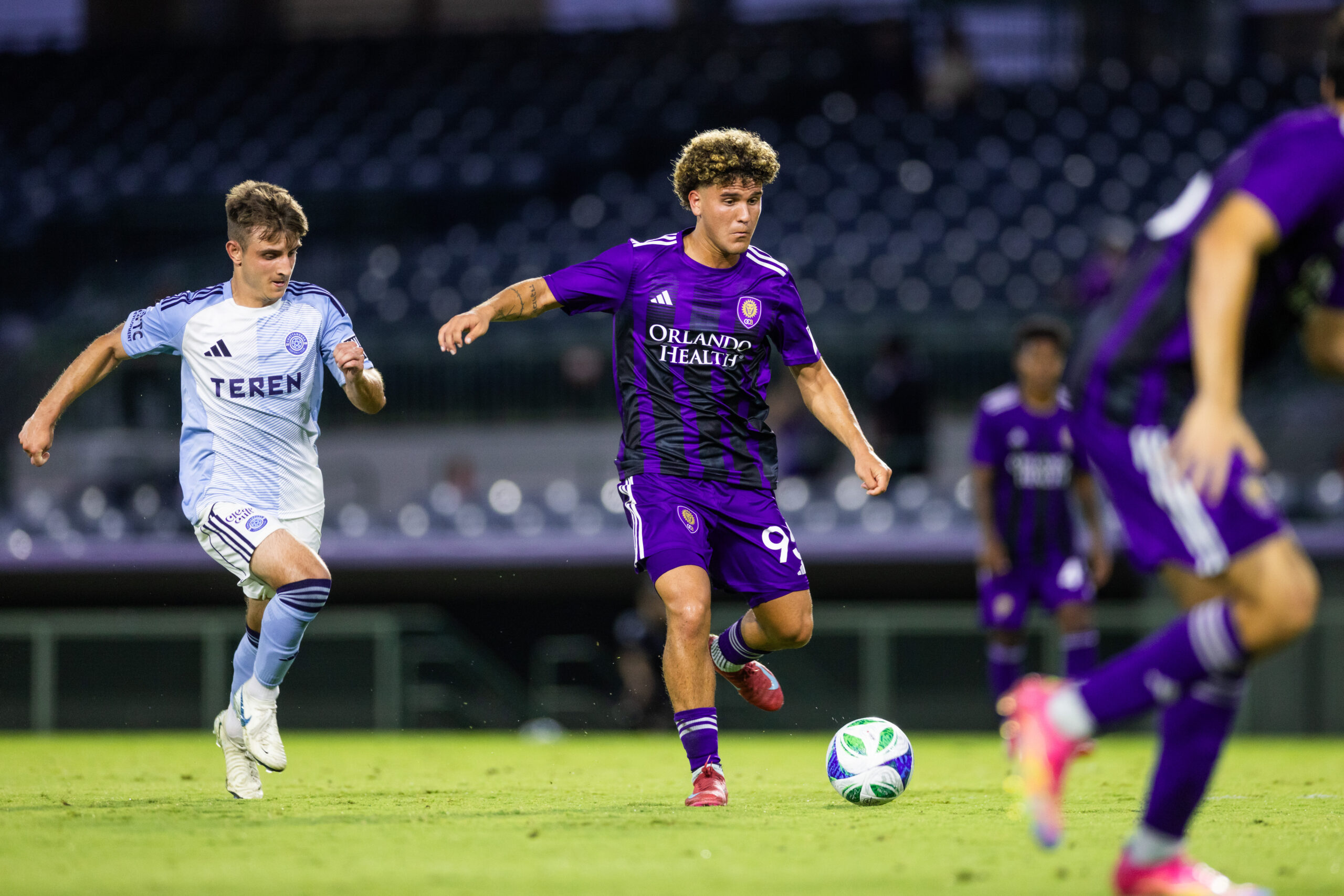
Hello, Mane Landers! I hope all is well with you down in Florida. I’ve been staying busy at work and will cover high school lacrosse and softball this week. Our beloved Lions lost, but OCB picked up a big win, while the Pride were off over the weekend. We have plenty to cover today, so let’s get to the links.
Orlando City Falls to Chicago Fire at Home
Orlando City fell 3-1 to the Chicago Fire Saturday at Inter&Co Stadium. The Lions trailed 3-0 in the first half before Alex Freeman pulled one back for Orlando just before halftime. It was not enough to spark a late comeback, as the Lions have now lost back-to-back matches within the past week. The Lions played the match without Head Coach Oscar Pareja, who was serving a one-match suspension after receiving a red card in the match against Atlanta United on Wednesday. Orlando City Assistant Coach Diego Torres was on the sidelines for this match. The Lions are off this weekend, with their next match on the road on June 14 against the Colorado Rapids.
Pride Players on International Duty
Multiple Orlando Pride players were in action over the weekend, representing their countries while away on international duty. Angelina captained the Brazil Women’s National Team, while Marta started on the bench and played in the second half as Brazil defeated Japan 3-1 in a friendly.
Barbra Banda scored for Zambia in a 1-1 friendly draw against Botswana. Grace Chanda and Prisca Chilufya also started in the match.
Pride defender Zara Chavoshi was on the bench for the Canadian Women’s National Team but did not play as Canada beat Haiti 4-1 in a friendly.
Pride goalkeeper Anna Moorhouse was on the bench as England defeated Portugal 6-0 in a UEFA Women’s Nations League matchup.
OCB Defeats Eastern Conference Leader Chattanooga FC
Orlando City B defeated Chattanooga FC 2-1 Sunday at Osceola County Stadium. Shak Mohammed scored the opening goal early in the first half for the Young Lions. Chattanooga FC found an equalizer just before halftime. In the second half, we had to wait all the way until stoppage time for another goal as Noah Levis scored the winner for OCB. The Young Lions are ninth in the Eastern Conference with 14 points. OCB will be on the road to take on Huntsville City FC Friday.
USWNT Beats China in Friendly
The U.S. Women’s National Team defeated China 3-0 Saturday at Allianz Field in St. Paul, MN in a friendly. Orlando Pride defender Emily Sams came off the bench in the second half and played 21 minutes. Fellow Pride defender Kerry Abello was on the bench but did not play. Defender Naomi Girma made her first appearance for the USWNT this year after dealing with injuries. The USWNT dominated from the start as Catarina Macario scored the opening goal in the match. Sam Coffey made it 2-0 lead just before halftime. In the second half, Lindsey Heaps scored the final goal of the match. The USWNT will be back in action Tuesday night against Jamaica at Energizer Park in St. Louis.
LAFC Defeats Club America to Qualify for FIFA Club World Cup
LAFC overcame a 1-0 deficit to defeat Club America 2-1 in extra time in a play-in game Saturday at BMO Stadium and booked its spot in the FIFA Club World Cup. LAFC trailed 1-0 through much of the match, but late in the second half, Igor Jesus scored the equalizer just before stoppage time. In extra time, Denis Bouanga scored the winning goal. LAFC will join fellow MLS sides Inter Miami and the Seattle Sounders in the FIFA Club World Cup. The tournament begins on June 14, and LAFC will face Chelsea, Flamengo, and ES Tunis in the group stage.
Paris Saint-Germain and Cruz Azul Win Continental Titles
Paris Saint-Germain finally won its first UEFA Champions League trophy, beating Inter Milan 5-0 Saturday in Munich. Desire Doue scored twice and added an assist. Achraf Hakimi, Khvicha Kvaratskhelia, and Senny Mayulu also contributed goals. Paris Saint-Germain completed the treble, winning Ligue 1, Coupe de France, and the Champions League this season. Luis Enrique became the second manager to win a treble with two different clubs, joining Manchester City’s Pep Guardiola. Paris Saint-Germain also became only the second French club to win the Champions League title, with Marseille lifting the trophy back in 1993. For Inter Milan, it was the second time in three years the club lost the final, falling to Manchester City two years ago. Inter suffered the biggest defeat in UEFA Champions League final history.
Sunday in Mexico, Cruz Azul routed the Vancouver Whitecaps 5-0 Sunday at Estadio Olimpico Universitario to win the Concacaf Champions Cup. Angel Sepulveda scored two goals as Cruz Azul dominated the matchup. The Whitecaps were unable to record a shot on target. It’s the third straight final that an MLS side has lost to a Liga MX side since 2022, when the Seattle Sounders lifted the trophy. With the win, Cruz Azul has qualified for the 2025 FIFA Intercontinental Cup and the 2029 FIFA Club World Cup.
Free Kicks
- Tom Bogert of GiveMeSport.com shared his insight on which MLS players to watch during the summer transfer window for potential moves. Orlando City defender Alex Freeman was mentioned, as well as Charlotte FC’s Patrick Agyemang and the Chicago Fire’s Brian Gutierrez.
- Former Orlando Pride Head Coach Tom Sermanni reflected on his time with the club. He provided insight into his journey from coaching the Pride as an expansion team, including the early challenges, Orlando’s first NWSL playoff appearance, mentoring young coaches such as Khano Smith and Seb Hines, and more.
- Washington Spirit Head Coach Jonatan Giraldez is reportedly set to become the next manager at OL Lyonnes and will join the club in June. Assistant Coach Adrian Gonzalez will be promoted to head coach for the Spirit.
- U.S. Men’s National Team Head Coach Mauricio Pochettino has added Walker Zimmerman, Nathan Harriel, and Paxten Aaronson to the roster to replace DeJuan Jones, Sean Zawadzki, and Folarin Balogun, who are all out due to injuries. The USMNT will play friendlies against Turkey on June 7 and Switzerland on June 10.
- The LA Galaxy finally snapped their record 16-match winless streak on Saturday, defeating Real Salt Lake 2-0.
That will do it for me today, Mane Landers. Enjoy your Monday and I’ll see you next time.
Orlando City
Orlando City vs. Chicago Fire: Five Takeaways
Here’s what we learned from a disappointing 3-1 home loss against Chicago.
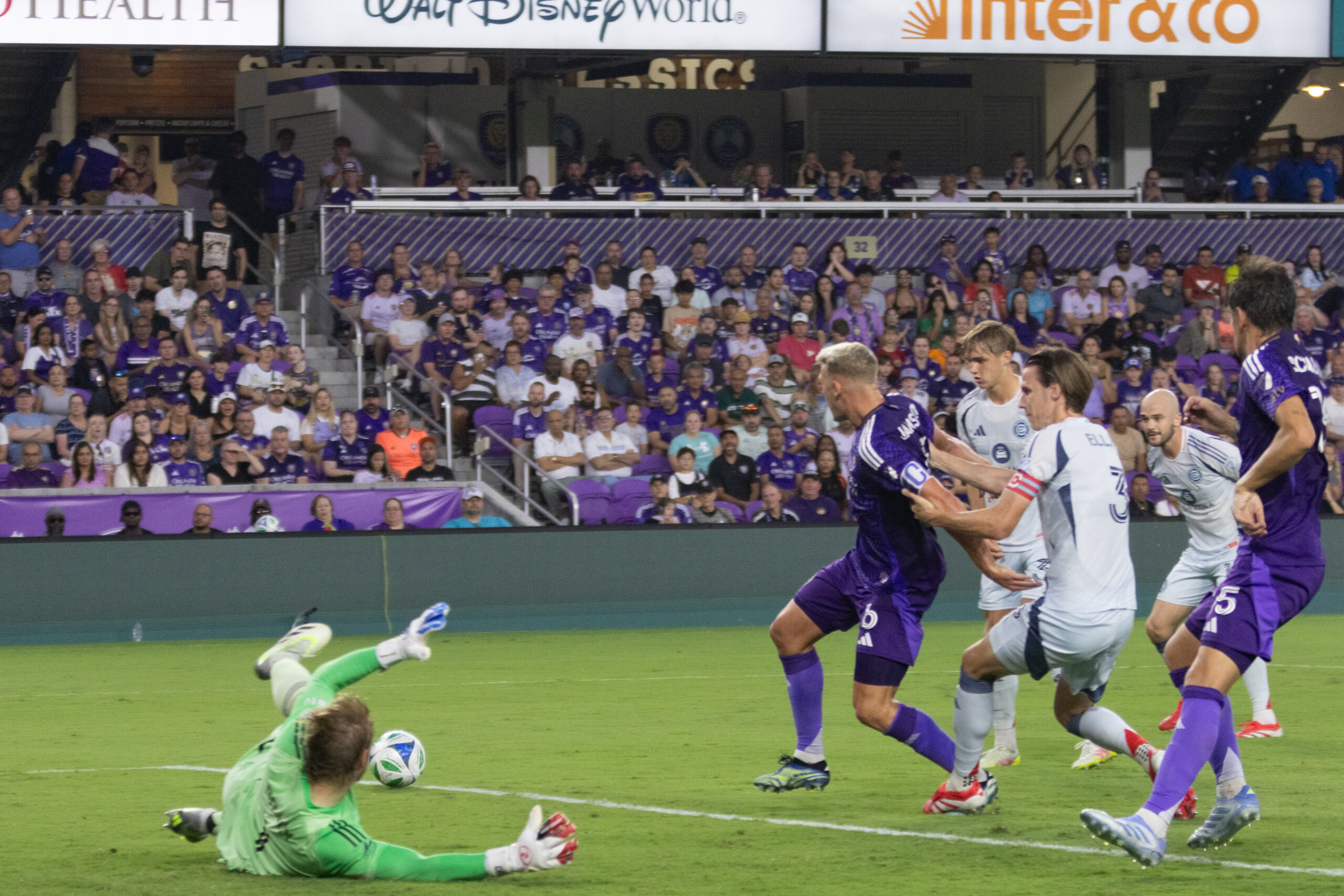
Orlando City won the final 55 minutes of Saturday night’s match 1-0, but unfortunately the Lions were awful in the opening 35 minutes and were already so far down that they could not really mount a real comeback, losing 3-1 to Chicago. After a loss like that, the less painful preamble the better, so let’s get right to it. Here are my five takeaways from Saturday night’s match.
A Gift From Gallese
It was an absolutely brutal start for Orlando City, as the nearly always sure-handed Pedro Gallese made a mess of a routine shot from Philip Zinckernagel, allowing it slip right through his hands and into the back of his net just five minutes into the game. Errors like that one happen to goalkeepers every season (Orlando City benefitted from a similar error by John McCarthy of the LA Galaxy back in March), but this one was especially crushing, as it happened right in the opening minutes of the game, giving Chicago an undeserved boost of confidence and removing the opportunity for the Lions to take an immediate lead and wash the bad taste of the collapse at Atlanta from their mouths. Zinckernagel was far too easily able to turn and get his shot off, one of many defensive miscues during the opening minutes of the game, but the shot he took was right at Gallese and El Pulpo probably saves that 99.9% of the time. Unfortunately, Saturday night’s shot was the one in one thousand that went right through his hands like butter.
Back To Back Breakdowns
Teams are often at their most vulnerable right after scoring a goal, as the euphoria of scoring a goal often leads to a dip in focus for the team that just scored, while the anger of allowing a goal brings on a surge of adrenaline for the team that was just scored upon, and they play with a serious sense of urgency in the immediate aftermath. This was not the case in any way, shape or form for Orlando City after allowing Chicago’s second goal, as the Lions gave the ball away almost instantly on the kickoff and then looked completely out of sorts as Chicago just blew right through the middle of the field and got the ball to Hugo Cuypers with no trouble at all. Cuypers then made Rodrigo Schlegel no trouble of his at all and scored his second goal within two minutes on a well-placed shot past Gallese. Chicago’s second goal came on a complete defensive breakdown as well, with Cuypers somehow unmarked in between three defenders right in front of the goalmouth, and for Chicago to then get a third goal right after that left many in the stadium stunned. Even though there was still almost an hour left to play, the game seemed almost over already with how poorly the entire defensive unit was playing.
Lots of Chances, One Conversion
Orlando City took 28 shots, pumped in 22 crosses, earned 13 corner kicks, and — according to Opta’s tracking — created two “big chances.” And yet, after all that, all the Lions had to show for it was a goal on a header from right back Alex Freeman, which was not one of their two big chances. I wrote last week about Orlando City’s nearly league-worst poor finishing on big chances and how I thought a positive regression to the mean might be coming, but what if it does not? Games like Saturday night’s show that it might not be bad luck. It might be that this team lacks a scorer who can find a way to convert even a league-average amount of those big opportunities. If that is the case, then the team will have to rely on scoring in other ways, and as the team is among the league leaders in goals scored, the Lions may be able to continue to score via more difficult opportunities, but they were unable to do so on Saturday night as Chicago goalkeeper Chris Brady was rarely troubled enough to get his shorts into a Brady bunch.
I’ll see myself out.
Lack Of Legs
May is finally over, and thus ends a punishing month for Orlando City with the club playing nine games between May 3 and May 31. It may not have been Óscar Pareja on the sidelines, but I am sure he selected the starting group, and it contained nine of the 11 players who started Wednesday night in Atlanta and seven players who started against Atlanta and against Portland the prior Saturday. The team just looked gassed throughout the match, and while Orlando dominated possession during the second half and took all the shots and made the crosses I mentioned in the prior takeaway, the team did not look locked in while doing so, with uncharacteristic misses happening from many different players. The four substitutes who came on all looked noticeably fresher and more energetic than their teammates, and perhaps more rotation from the starting group in this match, or in prior matches, might have led to a different result.
Freeman An Attacking Force
I want to end with a positive, and whether the ball deflected in off a defender or not, Freeman scored his fourth goal of the season, making him the first Orlando City defender to score four goals in an MLS season, and the season only just reached the halfway point. According to whoscored.com, Freeman’s average position on Saturday night was higher on the field (i.e. closer to the opposing goal) than every Orlando City starter except fellow right side player Marco Pašalić and Luis Muriel, and Orlando City made 39% of its attacks down that right side, looking to take advantage of the Freeman and Pašalić combination. Freeman’s goal was from a corner kick, so none of those right-side heavy attacks amounted to a goal, but Freeman was engaged and involved throughout and continued to show that he is one of the league’s best offensive threats at the right back position.
Those are my takeaways from Orlando City’s rough performance against Chicago. The team will now have a well-deserved two-week break before heading out on the road to Colorado on June 14. Hopefully the Lions will come out recharged and ready to start a new winning streak when that game kicks off against the Rapids.
Let us know your thoughts about the Chicago match in the comments below. Vamos Orlando!
-
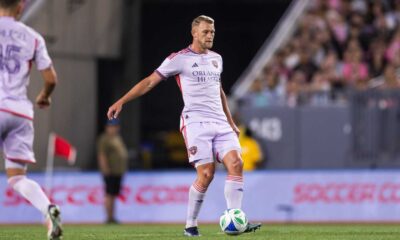
 Orlando City1 week ago
Orlando City1 week agoOrlando City vs. Portland Timbers: Preview, How to Watch, TV Info, Live Stream, Lineups, Match Thread, and More
-
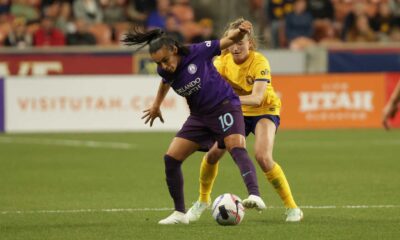
 Orlando Pride1 week ago
Orlando Pride1 week agoOrlando Pride vs. Utah Royals: Preview, How to Watch, TV Info, Live Stream, Lineups, Match Thread, and More
-

 Orlando City2 weeks ago
Orlando City2 weeks agoOrlando City vs. Nashville SC: Five Takeaways
-
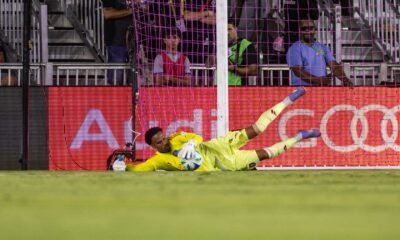
 Orlando City2 weeks ago
Orlando City2 weeks agoOrlando City vs. Inter Miami CF: Player Grades and Man of the Match
-
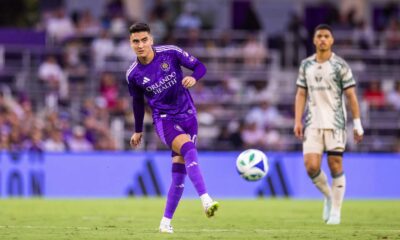
 Orlando City1 week ago
Orlando City1 week agoOrlando City vs. Portland Timbers: Final Score 1-0 as Lions Tie Club-Record 12-Game Unbeaten Streak
-

 Orlando City2 weeks ago
Orlando City2 weeks agoOrlando City vs. Nashville SC, U.S. Open Cup: Preview, How to Watch, TV Info, Live Stream, Lineups, Match Thread, and More
-
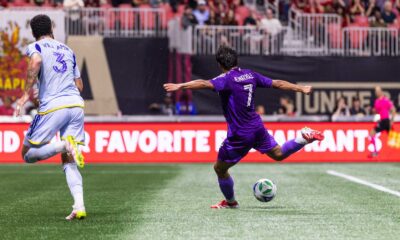
 Orlando City5 days ago
Orlando City5 days agoOrlando City vs. Atlanta United: Final Score 3-2 as Late Araujo Red Card Turns Orlando Lead into a Loss
-
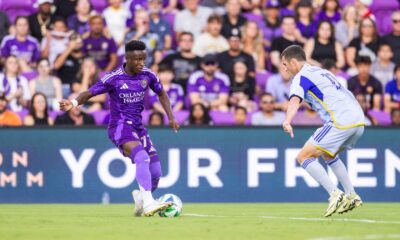
 Orlando City5 days ago
Orlando City5 days agoOrlando City vs. Atlanta United: Preview, How to Watch, TV Info, Live Stream, Lineups, Match Thread, and More


